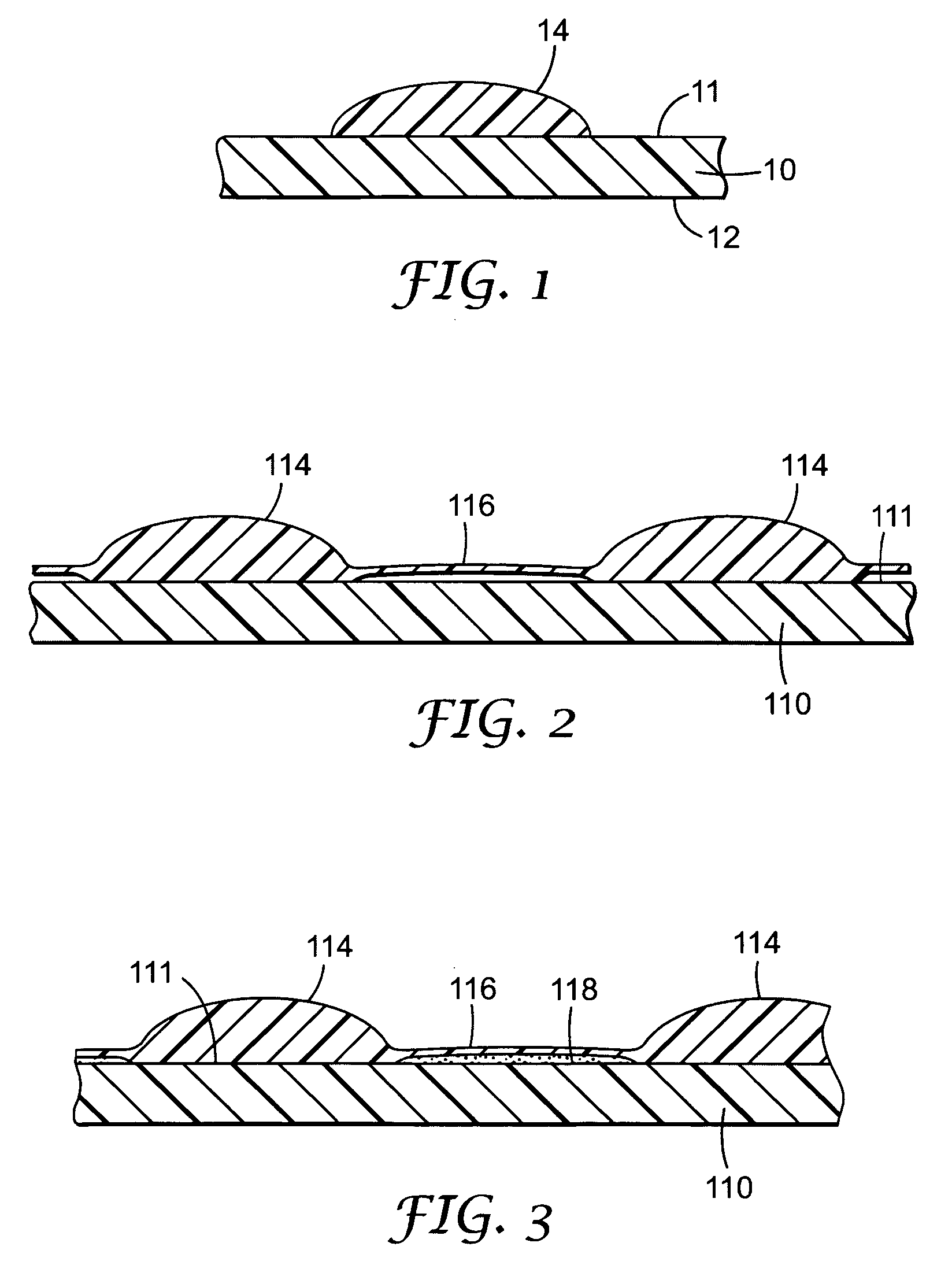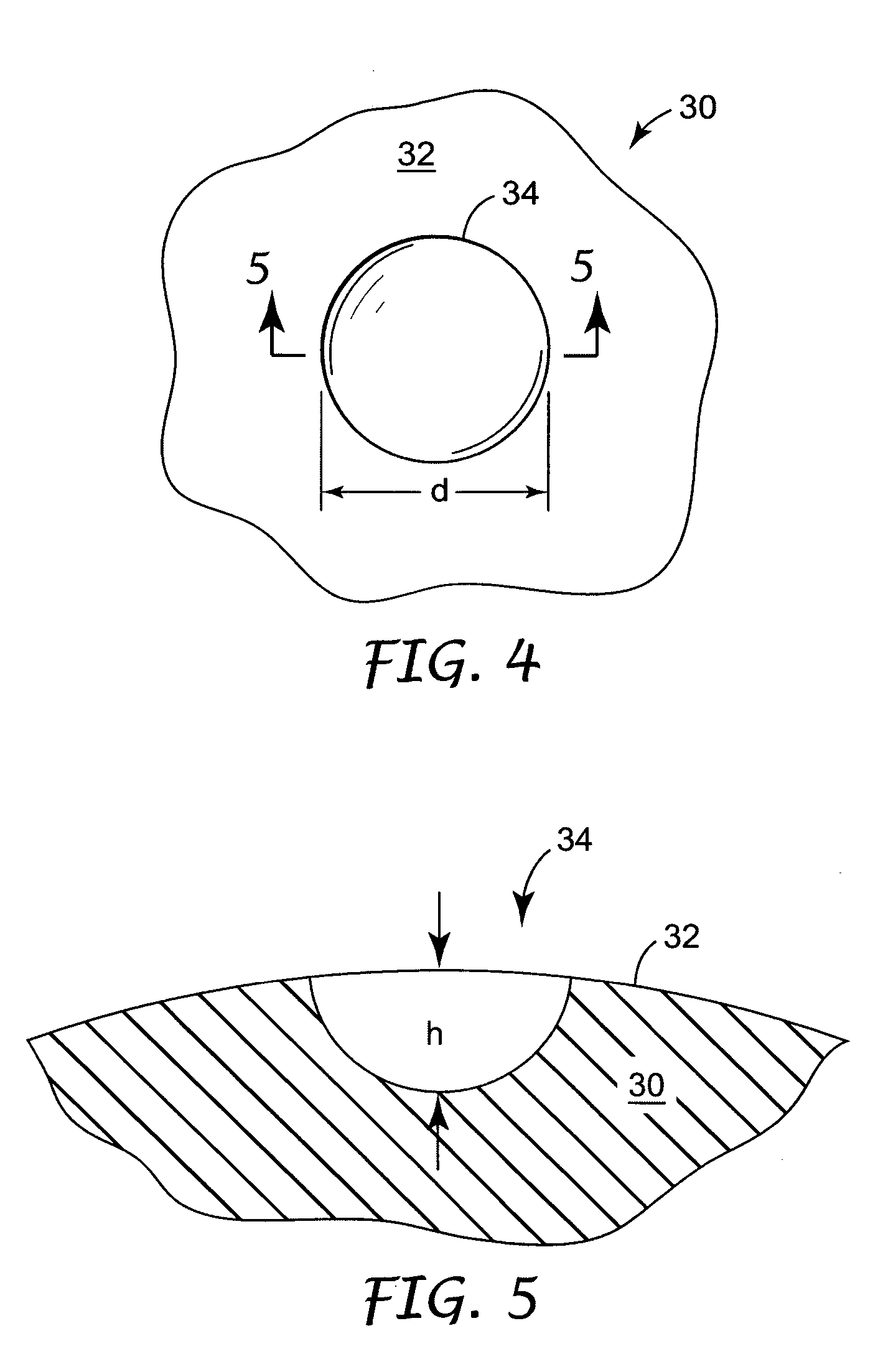Composite webs and closure systems
a technology of closure system and composite web, which is applied in the field of composite web, can solve the problems of reducing the breathability of the web, adding cost and weight to the web, and reducing the rigidity of the entire surface of the web, so as to control the shape, spacing and volume of one or more polymeric structures
- Summary
- Abstract
- Description
- Claims
- Application Information
AI Technical Summary
Benefits of technology
Problems solved by technology
Method used
Image
Examples
example 1
[0229]A composite web was produced using a system similar to that shown in FIG. 15. A 40 mm diameter twin screw extruder fitted with a gear pump was used to deliver a molten polypropylene polymer (7C05N, Huntsman) at a melt temperature of approximately 246° C. to a die. The die was positioned such that a film of molten polymer was extruded vertically downward into the interface region of a heated doctor blade and a cooled forming roll.
[0230]The doctor blade was forced against the forming roll with a pressure of 93 pounds per lineal inch (163 Newtons per lineal cm) (a pressure which allowed the molten polymer to create a gap between the blade and the roll which defined the thickness of the base film). The doctor blade was maintained at a temperature of 246° C. and the forming roll was maintained at a temperature of 30° C. by circulating cooled oil through the interior of the roll.
[0231]The exterior surface of the forming roll was machined using a computer controlled milling machine t...
example 2
[0234]A composite web was produced using a system similar to that shown in FIG. 15. A 40 mm diameter twin screw extruder fitted with a gear pump was used to deliver a molten polymer consisting of a styrene-ethylenebutylene-styrene block copolymer (KRATON G-1657) at a melt temperature of approximately 246° C. to a die. The die was positioned such that a film of molten polymer was extruded vertically downward into the interface region of a heated doctor blade and a cooled forming roll. The doctor blade was maintained at a temperature of 246° C. and the forming roll was maintained at a temperature of 30° C. by circulating cooled oil through the interior of the roll. The doctor blade was held against the forming roll with a pressure of 450 pounds per lineal inch (788 Newtons / lineal cm).
[0235]The exterior surface of the forming roll was machined using a computer controlled milling machine to have a series of six (6) different areas arranged around the periphery of the roll. Each of these...
PUM
| Property | Measurement | Unit |
|---|---|---|
| temperature | aaaaa | aaaaa |
| lengths | aaaaa | aaaaa |
| angle | aaaaa | aaaaa |
Abstract
Description
Claims
Application Information
 Login to View More
Login to View More - R&D
- Intellectual Property
- Life Sciences
- Materials
- Tech Scout
- Unparalleled Data Quality
- Higher Quality Content
- 60% Fewer Hallucinations
Browse by: Latest US Patents, China's latest patents, Technical Efficacy Thesaurus, Application Domain, Technology Topic, Popular Technical Reports.
© 2025 PatSnap. All rights reserved.Legal|Privacy policy|Modern Slavery Act Transparency Statement|Sitemap|About US| Contact US: help@patsnap.com



